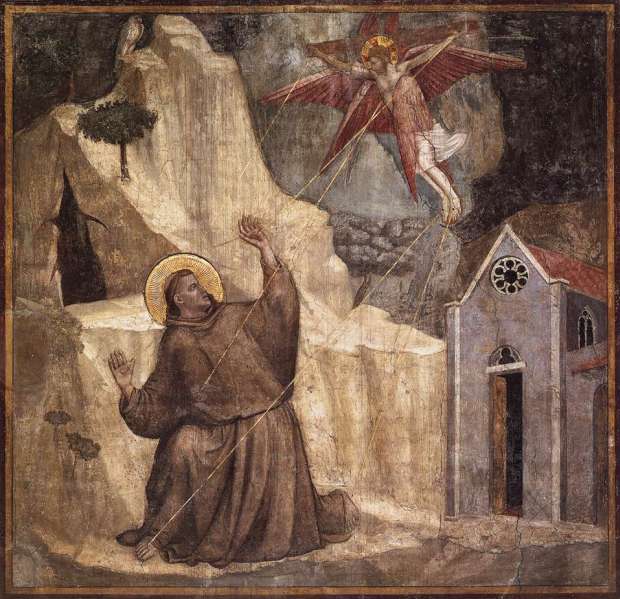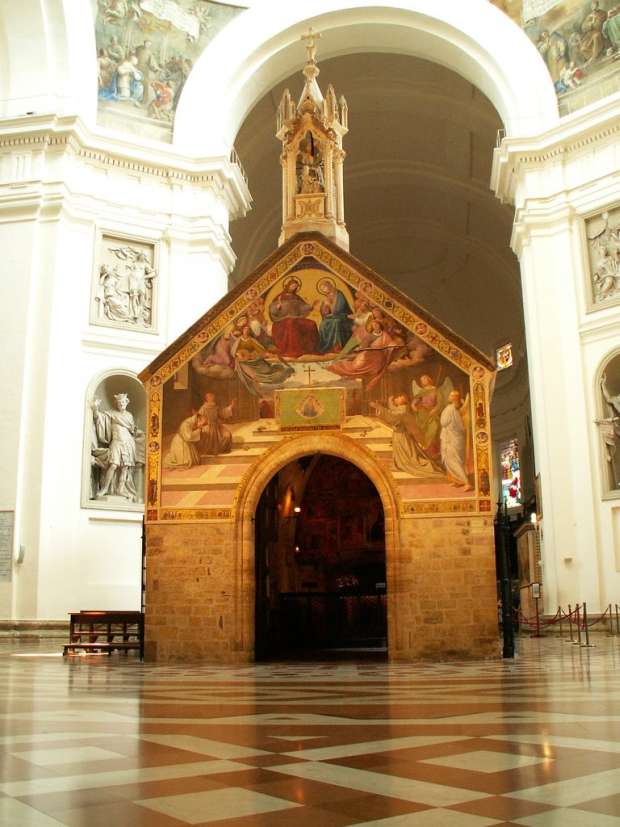The hilltop town of Assisi in Umbria was the home of Saint Francis, ‘the most saintly among saints’. Many of its narrow streets, churches and monasteries remain as they ere when he lived there in the 12th century. The Italian region of Umbria is characterized by tranquil countryside in which hilltop settlements are bounded by olive groves and orchards. But one town, Assisi, has a spirit all its own, for it was here that Saint Francis once lived and preached.
To visit the town today is to walk in the footsteps of Il Poverello ‘little poor man’. Legend merges with reality in the narrow medieval streets of Assisi, where most of the notable buildings in the town and on the wooded slopes of nearby Mount Subasio are connected in some way with the saint’s extraordinary life. The magnificent basilica that dominates the town; the Church of San Damiano, near Assisi; the Hermitage of the Carceri and the Church of Santa Maria degli Angeli all mark various stages in the spiritual development of the saint’s life.
The Hermitage of the Carceri, built in the 15th century, stands in dense woodland on the mountainside above Assisi. The small chapel that originally stood here and the many quiet grottoes nearby were favorite retreats of the young saint.

Giovanni Francesco was born in Assisi in about 182, the son of a rich wool merchant. Enthralled throughout his youth with the heroic idea of becoming a knight, he enlisted as a soldier when he was 20. He fought in the war between Assisi and Perugia but was captured and put in prison for a year. Soon after his release, he left Assisi once more – still in pursuit of his chivalrous dream – on an expedition to southern Italy that was to change his life forever. No sooner had he arrived at Spoleto, some 25 miles (40km) from Assisi, than, according to legend, a voice in a dream bade him return home at once. Near Assisi, he felt impelled to stop at the little Church of San Damiano to pray. While prostrate before the crucifix, the figure on the cross seemed to speak to him, urging him to ‘Go, Francis, and repair my house, because it is falling into ruin’.
Taking these words literally, Francis sold his horse and some valuable cloth that belonged to his father, and tried to give the proceeds to the priest at the Church of San Damiano. But, reluctant to become involved in a situation that could cause a family quarrel, the priest refused to take the money. Francis, however, was determined to rid himself of material possessions and left the money in the chapel. Further such acts of generosity led to Francis being brought before a public tribunal instigated by his enraged father, at which Francis renounced his inheritance and all worldly goods.
At the age of 24 Francis had become a beggar and, through his teachings in praise of poverty, joy and a reverence for nature, attracted many disciples. The first Franciscan order, the Friars Minor, was founded in 1209, followed in 1212 by the Order of Saint Clare, named after their first abbess, Clare of Assisi. As the number of ‘Poor Clares’ quickly grew, the Bishop of Assisi provided them with shelter in San Damiano, where Francis had received his call from God and where Clare spent the rest of her life.
Saint Francis and his followers lived simply – Franciscan brothers still wear the Umbrian peasant tunic. The saint revered all of creation, preaching to animals and birds, while embracing flowers, trees, sun and water as his ‘honoured brothers and sisters’. Legend has it that Francis once tamed a wolf, and he is said to have cautioned a friar whose coat was on fire against dousing it, since the water could harm the flames.
While meditating on Mount La Verna in 1224, the saint had a vision of the crucified Christ as an angel, who emitted darts of flame imprinting the five wounds of Christ on Francis’s body. In a fresco by Giotto, Francis is seen receiving the stigmata.

Today, San Damiano is a small monastery where the Franciscan message of simplicity and joy is powerfully present. A copy of the crucifix that allegedly spoke to Francis rests on the altar there; the original resides in the 13th century Basilica of Saint Clare in Assisi, where her ‘mummified’ body can still be seen. The Hermitage of the Carceri, hewn from the rock of nearby Mount Subasio, was used as a woodland retreat in the early days of the order led by Francis and its sparse furnishings are a testament to the harsh and frugal existence he demanded of his followers.
In the centre of the richly decorated Church of Santa Maria degli Angeli stands the tiny chapel of the Portiuncula, where St Francis prayed for guidance throughout his mission. On 3rd October 1226, Francis died at the Portiuncula, a humble chapel in the woods on Mount Subasio. Local folklore holds that at the moment of his death a flock of skylarks soared into the air from the chapel roof.

The Benedictines had granted the saint permission to worship there 16 years earlier, with lay preachers, or brethren, who, following his example, had renounced their wealth and dedicated their lives to serving God. When he realized that death was near, Francis begged to be carried to this peaceful retreat ‘so that the life of the body should end where the life of the soul began’.
In the 16th century, the ornate Church of Santa Mara degli Angeli, was built around the tiny chapel. This grand edifice, which took 100 years to complete, would have shocked the gentle saint, who believed that ‘even the Church should look poor’. The Basilica of Saint Francis erected in his honour would also have embarrassed him with its splendour. Here, Francis was canonized in 1228 and buried two years later.



































